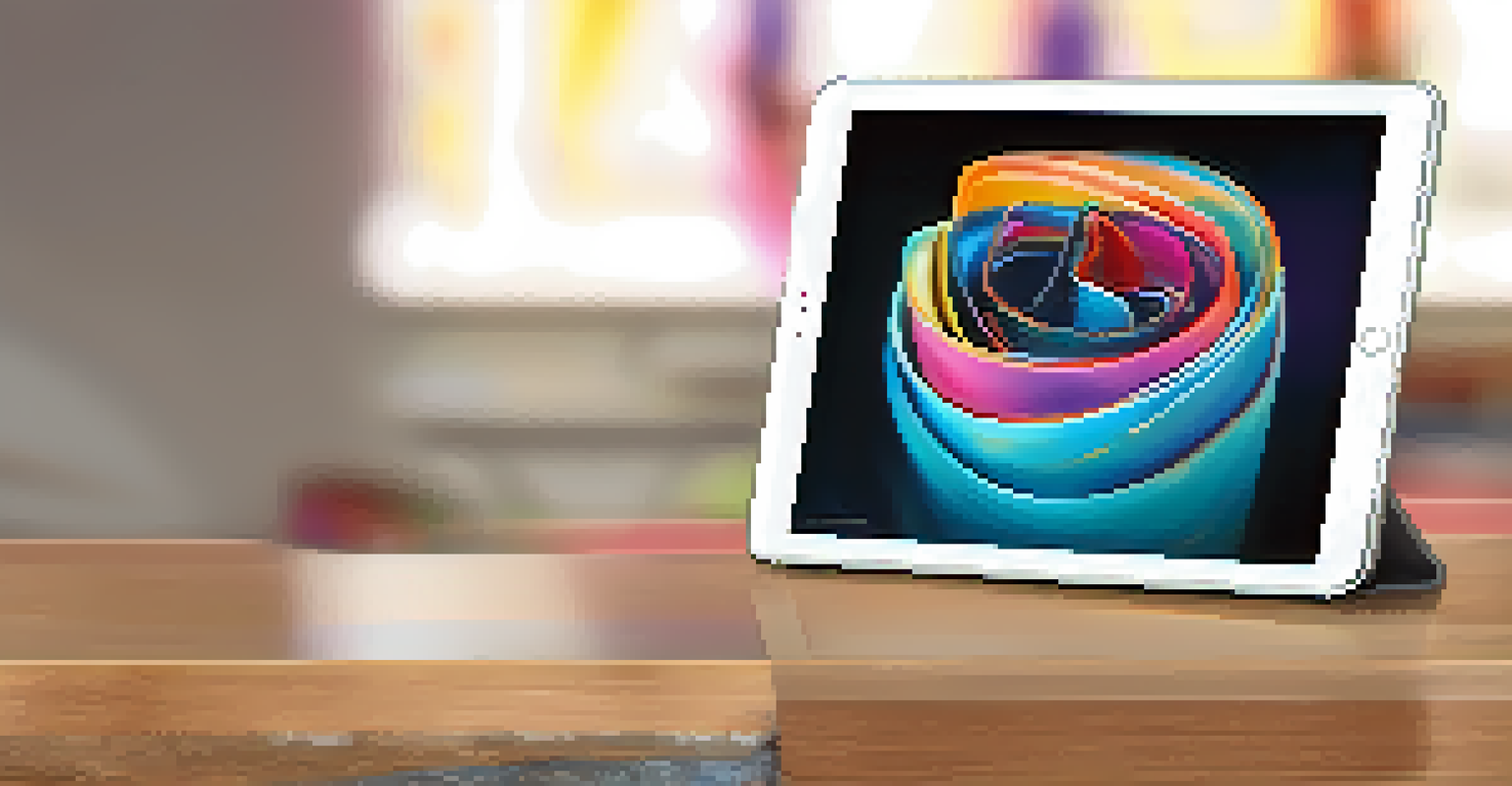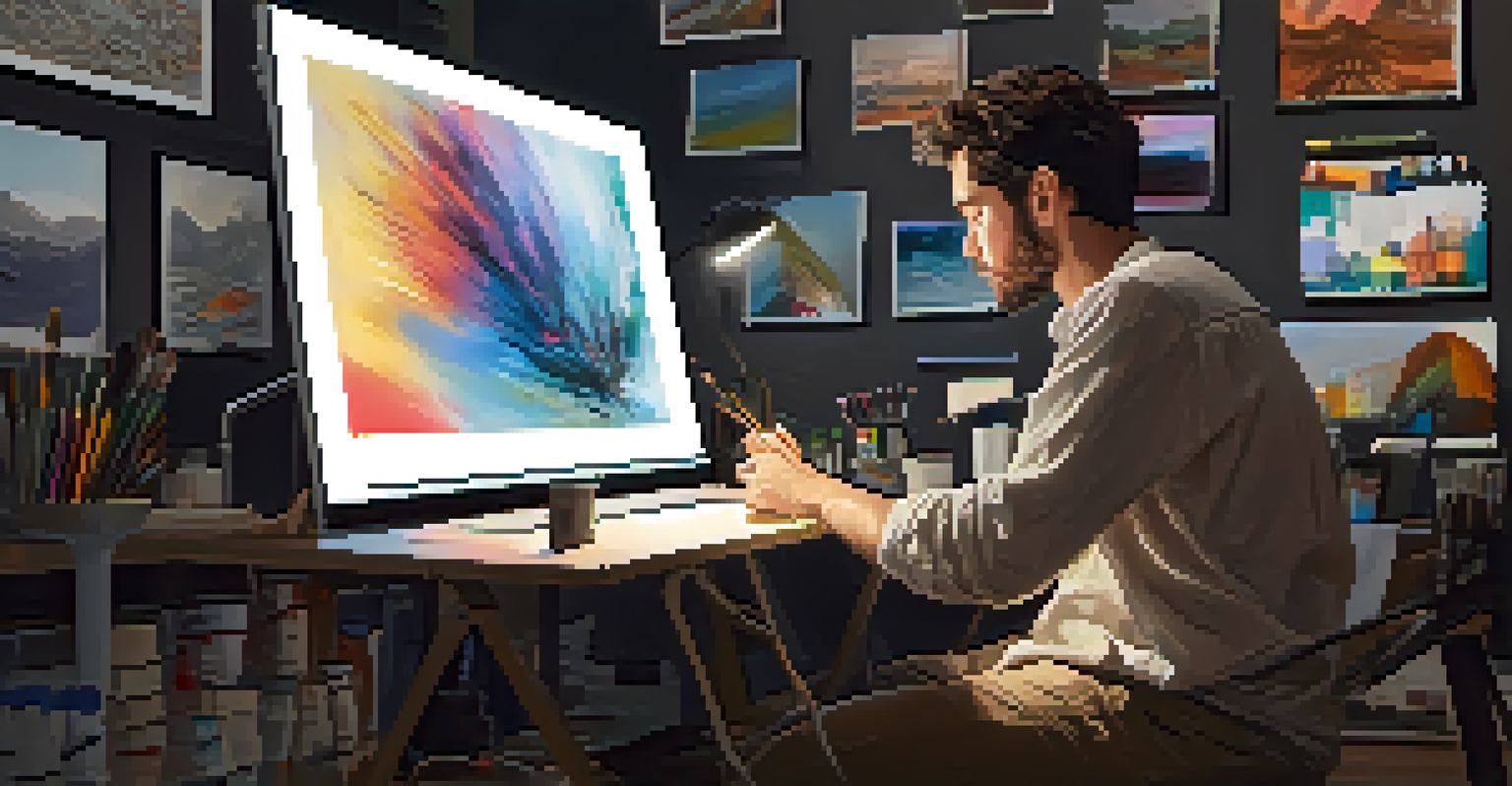Art as Investment: The Case for Luxury Digital Art

Understanding Digital Art: A New Frontier in Creativity
Digital art is an ever-evolving medium that combines technology and creativity. It's not just about pixels on a screen; it's a form of expression that reflects modern culture. Artists today use software and digital tools to create pieces that can be shared globally, breaking traditional barriers.
Digital art is not just a trend; it's a new way of seeing and understanding the world around us.
As digital art gains popularity, it challenges conventional notions of art ownership. Unlike physical art, digital pieces can be replicated with ease, leading to questions about scarcity and value. However, unique digital artworks, often minted as non-fungible tokens (NFTs), create a new sense of exclusivity.
This shift in how we perceive art opens up exciting opportunities for collectors and investors alike. Digital art is not just a passing trend; it’s a legitimate form of artistic expression that deserves attention in the investment world.
Why Invest in Luxury Digital Art?
Investing in luxury digital art offers unique advantages compared to traditional art. For one, the entry price can be significantly lower, allowing more people to participate in the art market. Moreover, the potential for high returns is attracting collectors looking to diversify their portfolios.

Luxury digital art has seen rapid appreciation in value, especially during the NFT boom. For example, some digital pieces have fetched millions at auctions, showcasing the demand for unique digital assets. This trend suggests that savvy investors are beginning to recognize the potential of this new medium.
Digital Art: A New Investment Frontier
Digital art is transforming the art world, offering unique opportunities for collectors and investors through technological advancements like NFTs.
Additionally, digital art can be easily stored and transferred, making it more accessible for investors. Unlike physical art, which requires space and care, digital files can be securely stored on the blockchain, ensuring authenticity and ownership.
The Role of NFTs in Digital Art Investment
Non-fungible tokens, or NFTs, are reshaping the art landscape by providing a way to verify ownership and authenticity. Each NFT is unique and cannot be replicated, which adds value to the digital artwork it represents. This innovation has made it possible for artists to sell their work directly to collectors without intermediaries.
Art is the most beautiful of all lies; it is an illusion, a part of the digital realm that transcends traditional boundaries.
NFTs also allow for royalties on resale, meaning artists can continue to benefit financially from their creations. This model incentivizes artists to produce quality work, knowing they can generate ongoing income. For investors, this means supporting artists while also potentially securing a valuable asset.
As the NFT market matures, it's becoming essential for investors to understand this technology. The more familiar you are with how NFTs function, the better equipped you'll be to navigate this exciting investment landscape.
Market Trends: The Rise of Digital Art Collectors
The digital art market is experiencing a significant surge in interest from collectors. As more people spend time online and engage with digital content, the demand for digital art continues to grow. This trend is particularly evident among younger generations who are more comfortable with technology and digital transactions.
Social media platforms have become pivotal for artists to showcase their work and connect with potential buyers. Platforms like Instagram and Twitter are buzzing with digital artists sharing their creations, leading to increased visibility and sales. This democratization of art has made it easier for collectors to find and support emerging talent.
NFTs Ensure Art Ownership and Value
Non-fungible tokens (NFTs) provide a way to verify the authenticity and ownership of digital art, making it a valuable asset for investors.
As the market expands, it’s crucial for collectors to stay informed about trends and developments. Keeping an eye on popular platforms and community discussions can help investors make smarter choices and identify promising artists early on.
Navigating Risks in Digital Art Investment
Like any investment, purchasing digital art comes with its risks. The volatility of the NFT market can lead to significant price fluctuations, making it essential for investors to conduct thorough research. Understanding the artist's reputation and the uniqueness of the artwork can help mitigate some of these risks.
Additionally, the technology behind NFTs can be complex, and there are concerns about security and fraud. Investors should be cautious and use reputable platforms for buying and selling art. Familiarizing oneself with best practices in the digital space can go a long way in protecting your investment.
It’s also wise to diversify your digital art portfolio. Just as with traditional investments, spreading your investments across different artists and styles can help minimize risk and increase the potential for returns.
The Future of Digital Art as an Investment
As technology continues to advance, the future of digital art looks bright. With innovations in virtual reality and augmented reality, artists are finding new ways to create and showcase their work. This evolution is likely to attract even more collectors and investors to the digital art space.
Moreover, institutions are beginning to recognize digital art as a legitimate form of investment, which can further solidify its place in the art world. Museums and galleries are starting to include digital art in their exhibitions, providing more exposure and validation for this medium.
Growing Demand for Digital Collectibles
The surge in interest from collectors, especially younger generations, is driving demand for digital art, facilitated by social media and online platforms.
In conclusion, investing in luxury digital art presents a unique opportunity to be part of a growing market. As the landscape evolves, staying informed and engaged will be key to navigating this exciting new frontier.
How to Get Started Investing in Digital Art
If you're interested in diving into the world of digital art investment, the first step is to educate yourself. Familiarize yourself with the different platforms where digital art is bought and sold, such as OpenSea, Rarible, and Foundation. Understanding how these platforms operate will help you make informed decisions.
Next, consider following artists and influencers in the digital art community. Platforms like Twitter and Discord can provide valuable insights into emerging trends and popular artists. Engaging with these communities can also give you a sense of the art that resonates with collectors.

Finally, start small and gradually build your collection. Look for pieces that resonate with you personally, as this will enhance your enjoyment of the investment. As you gain experience, you can expand your portfolio and explore different styles and artists.